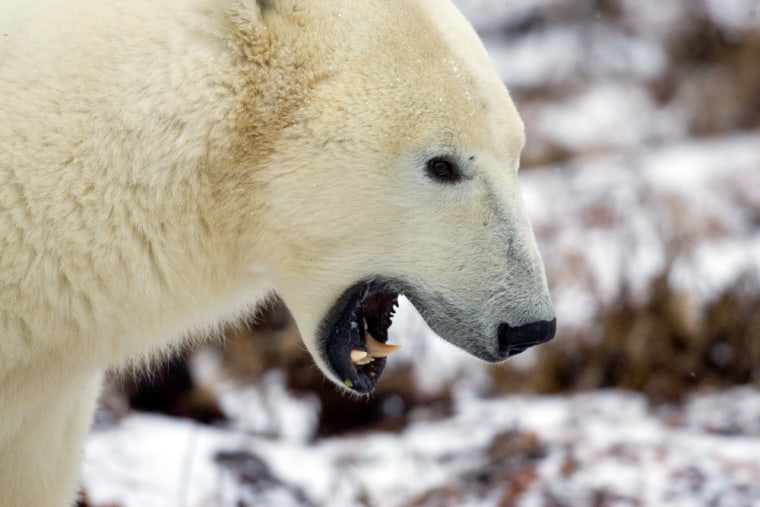Lions and tigers and bears are about as terrifying, sizewise, as it’s going to get in the wild world of mammals, new research shows.
Ecologists at the Zoological Society of London modeled the energy budgets of land-dwelling carnivores and arrived at a 1-ton limit as the maximum sustainable mass for these meat-eating mammals.
After that, there is a huge payoff for each kill made by a large predator, but it takes too much lumbering energy for the behemoths to hunt the vast quantities of meat required to carry on across evolutionary time, said Chris Carbone, lead author of the new research published in the journal PLoS Biology.
At least four terrestrial, carnivorous mammals that Carbone puts near the 1-ton mark have gone extinct: the short-faced bear, the North American lion, the South American sabercat and Megistotherium osteothlastes (a wolflike carnivore that lived 25 million years ago in Africa).
Today’s large carnivorous land mammals, including the record-setting polar bears — which usually weigh around half a ton but can grow to weigh nearly a ton, are threatened in part because of the energy intake-and-expenditure equation, Carbone told LiveScience.
“By being a carnivore that specializes on hunting big prey, it potentially can make you vulnerable to the process of extinction,” he said. “It’s more costly to feed on these larger prey, so it’s more energy-demanding. And you’re more reliant on prey. If you can’t meet those energy costs, you’re no longer viable over time.”
Hunting strategies
Carbone’s model also explains some of the hunting strategies used by carnivorous mammals and how they vary, depending upon the size of the carnivore and whether they tend to prey on invertebrates (such as insects) and smaller animals or larger vertebrates, such as deer, antelopes and their relatives.
Carnivores travel over some of the widest distances of all land-based mammals for their size. The long travels, plus chasing, pulling down and pulling apart their prey, require a lot of energy.
For carnivores that feed on rodents, small reptiles or insects, most of the energy cost comes simply from getting to and from prey, Carbone said. “They might chase and eat it, but it’s dispatched easily.”
Lolling about and naps are ways big carnivores make up for the energy costs, Carbone and his co-authors surmise in the research.
Midsize carnivores — around the size of a lynx, jackal or termite-eating aardwolf, a hyenalike carnivore that lives in Africa — have a crossover advantage energetically, Carbone said. They have low metabolic rates that allow them to conserve energy and can hunt both small and large prey.
For instance, Eurasian lynxes can feed happily on rabbits and smaller prey, but due to their size, they can also take down medium-sized antelopes. In the absence of large prey, such animals can always resort to rodent-killing, Carbone said.
The difficulty of catching and killing larger animals costs twice as much energy (even though the payoff is greater, too). But massive, large-prey predators have no small-prey options — those meals are too small to be worthwhile. Massive mammals must hunt the big animals that require huge amounts of energy to locate, catch and take down. “There is no where else to go, and then you’re kind of stuck,” Carbone said.
Animal 'ground rules'
Paleobiologists will find Carbone's model useful, said John A. Finarelli, a University of Chicago paleontologist who studies doglike carnivores. In the past, some scientists have looked at the minimum mass limits for warm-blooded animals, and even stated that North American mammals never approached the maximum mass limit.
"However, in light of (Carbone's) findings, it could very well be the case that carnivorous mammals do not play by the same set of rules that other mammals do," Finarelli said.
The largest known land-dwelling carnivores of all time were lower-metabolism dinosaurs such as Spinosaurus (about 8 tons), Giganotosaurus (about 8 tons) and Tyrannosaurus (about 6 tons).
And then there was the 15-ton Indricothere — but that extinct mammal was an herbivore.
“Carnivores, because of the cost of hunting, can never achieve the sizes and intake rate of prey of the largest herbivores,” Carbone said. “It’s costly to be a big carnivore. The weaponry required to take down big prey adds to cost in terms of movement and maintenance. Ultimately that limits your ability to hunt, which again limits your size.”
